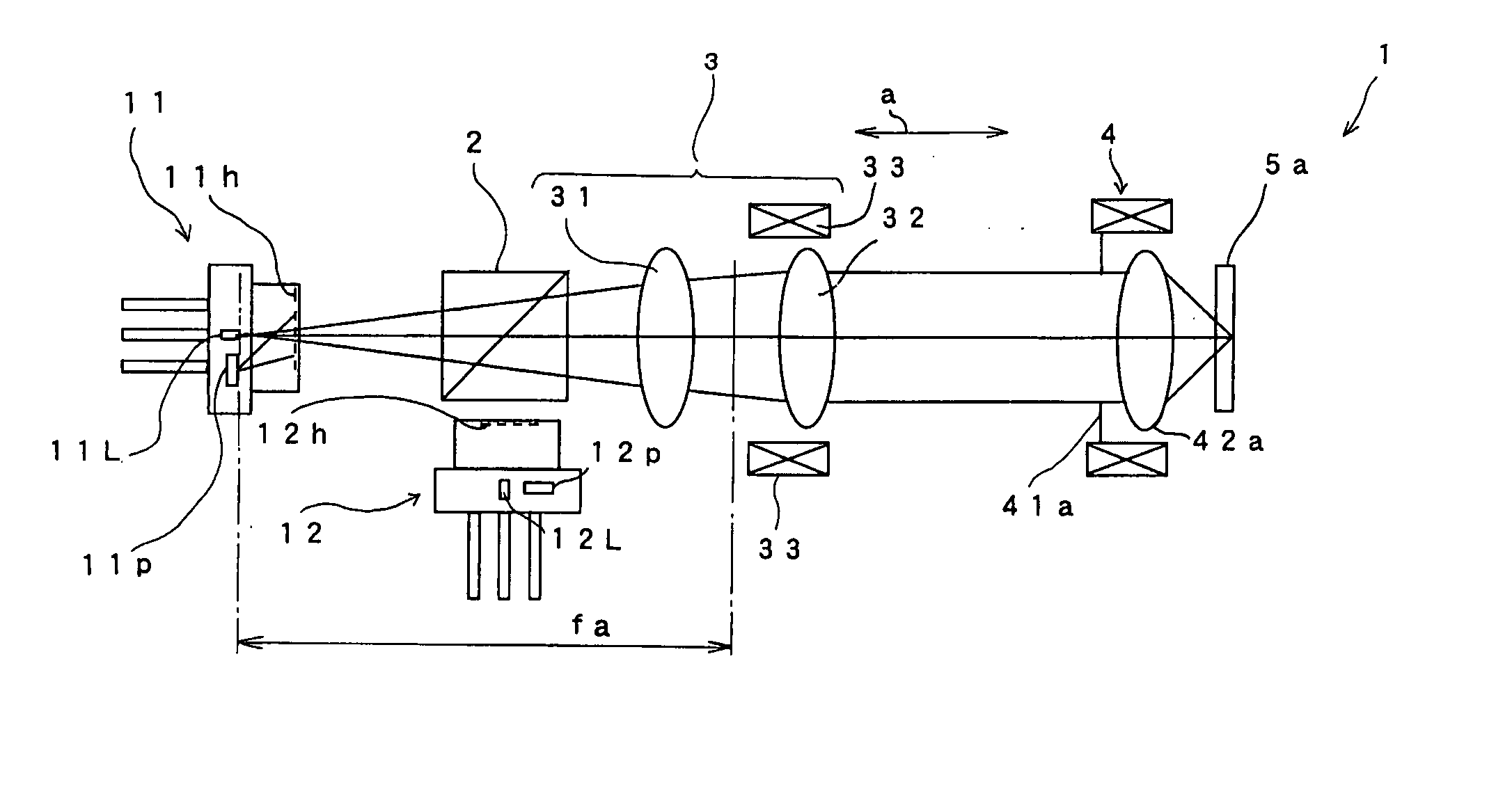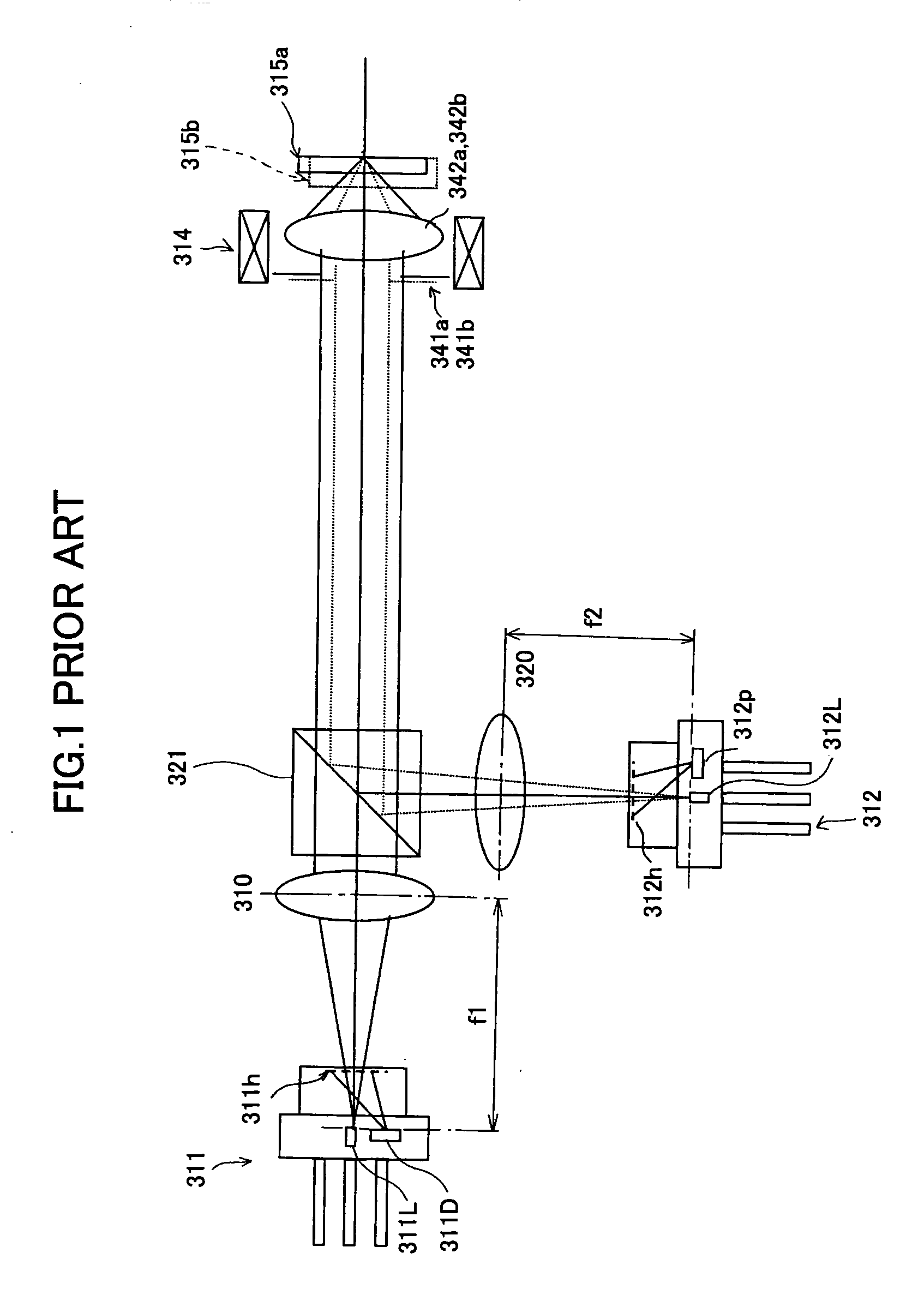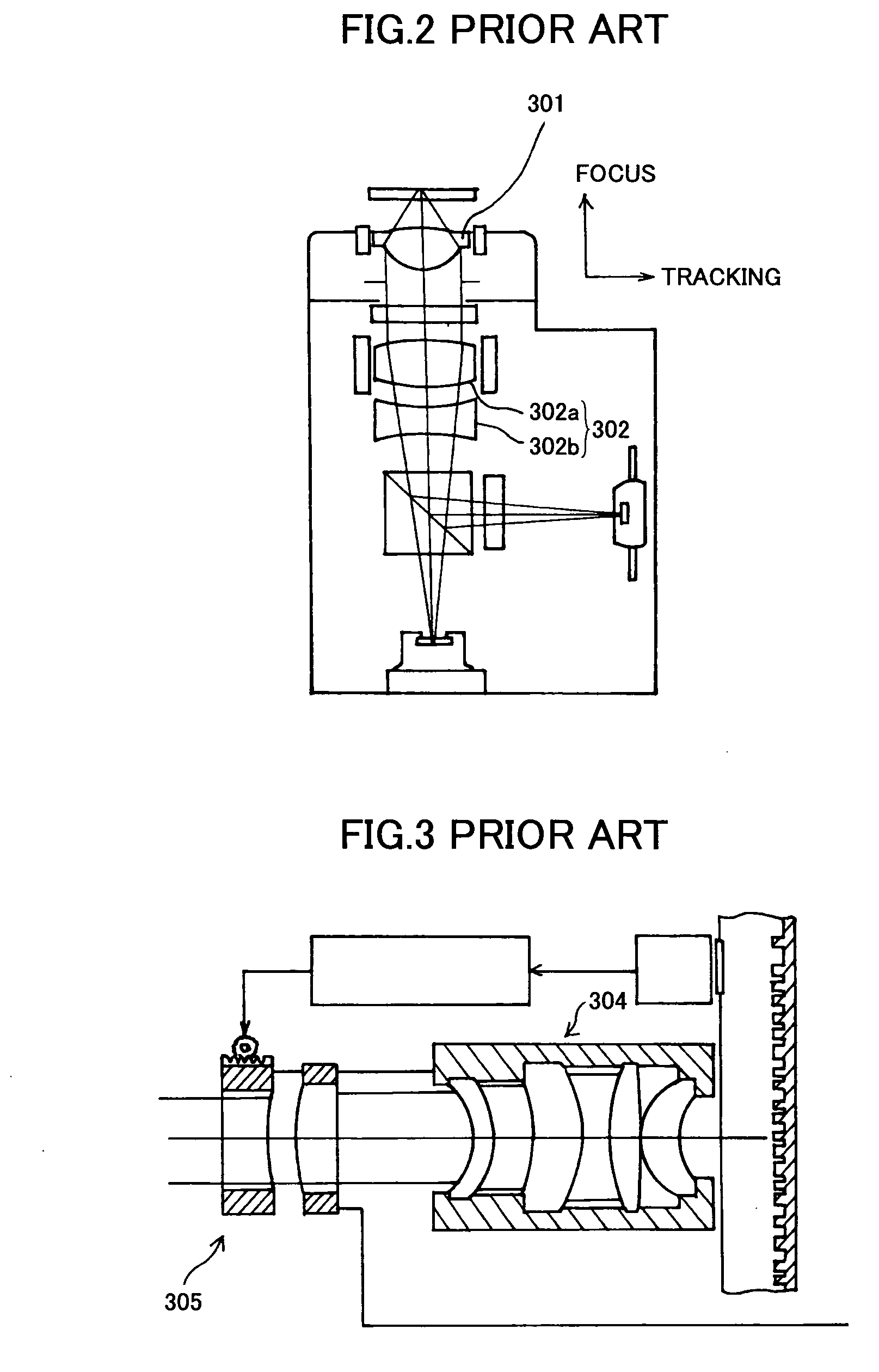Optical pickup apparatus and an optical disc drive apparatus equipped with such an optical pickup
a technology of optical disc drive and optical pickup, which is applied in the field of optical disc drive apparatuses, can solve the problems of increasing the size affecting the operation of the optical system, and acquiring a high output of light sources, so as to achieve good light use efficiency, no chromatic aberration, and the effect of chromatic aberration
- Summary
- Abstract
- Description
- Claims
- Application Information
AI Technical Summary
Benefits of technology
Problems solved by technology
Method used
Image
Examples
first embodiment
[0096] A description will be given of an optical pickup apparatus according to a first embodiment of the present invention. FIGS. 5A and 5B show an optical system provided in the optical pickup apparatus according to the present invention.
[0097] The optical system 1 shown in FIGS. 5A and 5B comprises a first hologram unit 11, a beam splitter 2, a coupling lens system 3 and an actuator 4 that are arranged on a straight line in that order. The optical system 1 also comprises a second hologram unit 12, which faces the beam splitter 2 and has an optical axis perpendicular to the straight line. It should be noted that the first coupling lens system 3 includes a first coupling lens (a group of lenses) 31, a second coupling lens (a group of lenses) 32, a single-axis actuator 33 for driving the second coupling lens 32 in a direction of the optical axis, etc. The actuator 4 is provided with apertures (opening parts) 41a and 41b, objective lenses 42a and 42b, a holder 43, etc., so as to driv...
second embodiment
[0150] A description will now be given of a second embodiment of the present invention. It should be noted that parts that are equivalent to the parts described in the above description are given the same reference numerals, and descriptions there of may be omitted.
[0151] A light beam projected from a semiconductor laser is a radially expanding light beam, and a beam diameter parallel to the junction plane of the semiconductor laser is different from a beam diameter of perpendicular to the junction plane. For this reason, in an optical pickup apparatus, generally, the beam diameters in all directions are equalized by using a beam shaping prism so as to equalize a rim intensity of the light beam incident on an objective lens having a circular aperture, thereby suppressing reduction in an amount of light.
[0152] However, a beam shaping prism cannot be provided in an optical system using a CL expander since an optical path is a diverging / converging optical path. For this reason, in or...
PUM
| Property | Measurement | Unit |
|---|---|---|
| wavelength | aaaaa | aaaaa |
| wavelength | aaaaa | aaaaa |
| wavelength | aaaaa | aaaaa |
Abstract
Description
Claims
Application Information
 Login to View More
Login to View More - R&D
- Intellectual Property
- Life Sciences
- Materials
- Tech Scout
- Unparalleled Data Quality
- Higher Quality Content
- 60% Fewer Hallucinations
Browse by: Latest US Patents, China's latest patents, Technical Efficacy Thesaurus, Application Domain, Technology Topic, Popular Technical Reports.
© 2025 PatSnap. All rights reserved.Legal|Privacy policy|Modern Slavery Act Transparency Statement|Sitemap|About US| Contact US: help@patsnap.com



